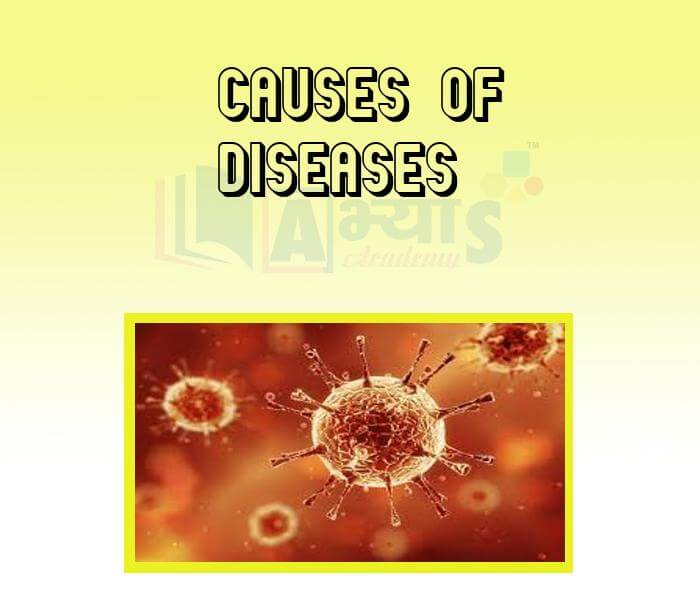Causes of Diseases





Causes of Diseases
Causes of Diseases: Most of the diseases will have many causes, rather than one single cause. These causes of diseases are classified into two types:
Poor health due to inadequate diet: It occurs due to deficiency of one or more nutrients, making the person unhealthy or susceptible to diseases, e.g. kwashiorkor, a nutritional deficiency disease occurring due to low protein diet. So, lack of good nourishment becomes second level of cause of disease.
Genetic disorders: These are present since birth; pass down from parents to offsprings, e.g. haemophilia.
Various pollutants present in environment : Pollutants in air, water and soil also contribute in causing diseases, e.g. intensive use of nitrate fertiliser causes methaemoglobinaemia.
Improper functioning of any body organ : Non-communicable diseases (i.e. non-spreadable diseases) like diabetes, blood pressure and heart diseases are due to the malfunctioning of body organs.
Lack of public services or poor economic conditions. It also contributes to the cause of disease. These causes become the third level cause of disease.
Note: The diseases, which are caused when organ and tissues degenerate and do not work well with increasing age are called degenerative diseases. Arthritis, disturbed sight and hearing defects are all degenerative diseases.
Infectious and Non-infectious Causes: Immediate causes of diseases belong to two distinct types.:
Lack of essential nutrients/substances in our diet, e.g. proteins, vitamins, minerals, etc.
Uncontrolled growth of tissues in any part of body.
Damage to any part by accident or by other means.
Which of the following is a set of disesase caused by viruses in human beings? | |||
| Right Option : B | |||
| View Explanation | |||
A non-communicable disease is _________________ | |||
| Right Option : D | |||
| View Explanation | |||
Disease causing microble is called ___________________ | |||
| Right Option : B | |||
| View Explanation | |||
Students / Parents Reviews [10]
A marvelous experience with Abhyas. I am glad to share that my ward has achieved more than enough at the Ambala ABHYAS centre. Years have passed on and more and more he has gained. May the centre flourish and develop day by day by the grace of God.

Archit Segal
7thMy experience with Abhyas is very good. I have learnt many things here like vedic maths and reasoning also. Teachers here first take our doubts and then there are assignments to verify our weak points.

Shivam Rana
7thAbout Abhyas metholodology the teachers are very nice and hardworking toward students.The Centre Head Mrs Anu Sethi is also a brilliant teacher.Abhyas has taught me how to overcome problems and has always taken my doubts and suppoeted me.

Shreya Shrivastava
8thOne of the best institutes to develope a child interest in studies.Provides SST and English knowledge also unlike other institutes. Teachers are co operative and friendly online tests andPPT develope practical knowledge also.

Aman Kumar Shrivastava
10thIt was a good experience with Abhyas Academy. I even faced problems in starting but slowly and steadily overcomed. Especially reasoning classes helped me a lot.

Cheshta
10thAbhyas is a complete education Institute. Here extreme care is taken by teacher with the help of regular exam. Extra classes also conducted by the institute, if the student is weak.

Om Umang
10thI have spent a wonderful time in Abhyas academy. It has made my reasoning more apt, English more stronger and Maths an interesting subject for me. It has given me a habbit of self studying

Yatharthi Sharma
10thMy experience with Abhyas academy is very good. I did not think that my every subject coming here will be so strong. The main thing is that the online tests had made me learn here more things.

Hiya Gupta
8thIt has a great methodology. Students here can get analysis to their test quickly.We can learn easily through PPTs and the testing methods are good. We know that where we have to practice

Barkha Arora
10thAbhyas Methodology is very good. It is based on according to student and each child manages accordingly to its properly. Methodology has improved the abilities of students to shine them in future.
